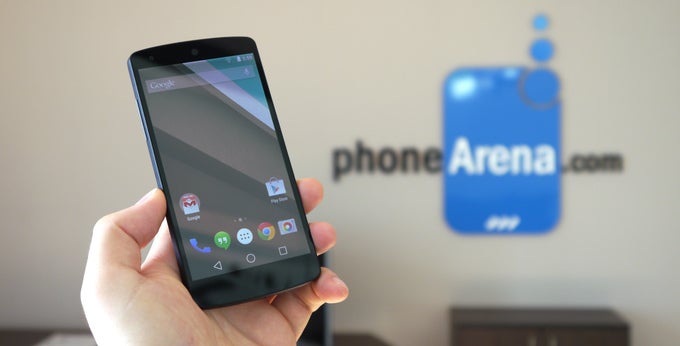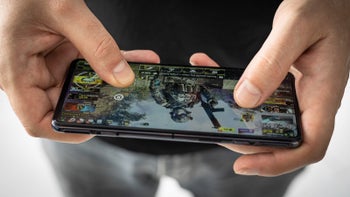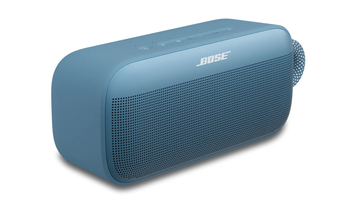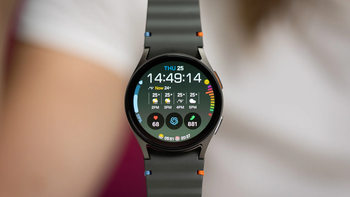Android L Q&A: your questions answered

A couple of weeks ago, we posted our preview of Android L, which was based on our experience with the platform's beta release. Soon after that, we invited you to ask us anything that you wanted to know about Android's newest flavor. Many of our readers took this opportunity and submitted questions for us to answer; those who did are getting their responses today.
Before we continue, we'd like to remind you that all the available official information regarding L's release is in our "When will my phone get the Android L update" post. That's where we've listed the phones and tablets due for an update, and the article will be expanded over time, as more info is released by manufacturers. With that out of the way, let's get to the answering part.
akki20892: Why they use Android 'L' instead some dessert name?
hafini_27: Estimatedly when is it going to be released? The official name is Lollipop, right?
About the mystery surrounding the platform's name, we sent an inquiry to Google and received the following response: "We're currently referring to it simply as the L-release. A version number and name has not yet been confirmed." Furthermore, we heard from the Twittersphere that Android L will get a proper dessert name once the best one is picked. Lollipop does indeed sound like a fitting name, but it isn't the platform's official and final name yet. As for Android L's public release, we don't have an official date, but we're guessing that we're still at least a couple of months away from seeing the version in its final form.
sip1995: What hardware requirements Android L has ?
XaErO: Can Android L also be efficiently run on a 512MB RAM ?? .. Just like Android Kitkat ??
drunkenjay: Is android L gunna have all the performance that KitKat and jellybean had? Like project svelte and project butter?
It looks like the complete hardware requirements for Android L aren't known yet, but is safe to say that the platform would require at least 512MB of RAM and an ARMv7 processor to run. It is early to say whether or not the L release will run well on a phone with just 512MB of RAM, but there's very few of them being released now anyway. As for Project Svelte and Project Butter, rest assured that the benefits they bring aren't going anywhere.
abhijithkumar.nit: Has project Volta bore fruits? or in other words, has Google really succeeded in improving the not so great battery life of the nexus 5? Have you noticed any real life improvements?
That's a great question you got there, but we're afraid that we can't answer it with absolute certainty. At least not right now. We executed our standard battery test – the same one that we use when reviewing any phone or tablet – on our Google Nexus 5 running Android L, but the "boost" in battery life vs the exact same phone running KitKat was literally under three minutes. Perhaps our testing method does not benefit from L's power management optimizations. Google, however, is promising significant battery improvements thanks to project Volta, and other medias confirm that they've recorded a boost of over 30% in battery life.
XaErO: I read that Android L is bringing some ground-breaking camera related APIs .. Would that mean; that the Stock Android can produce stills/videos even better than something we have seen so far on Nokia or Samsung ??
Af1rPA: Will it make the Moto X take better pictures?
Yes, Android L brings new camera APIs which could potentially make not only the stock Camera app better, but also the third-party apps that take advantage of these APIs. Here's a post dedicated to these camera APIs in Android L. Whether or not the stock Android camera would be better than those by Nokia or Samsung is hard to say right now – determining this will surely require proper real-life testing. As for the Moto X camera app, there's a chance of seeing improvements if its camera app is updated to take advantage of the new software in Android L.
drunkenjay: What are the features that you find better or worse on android L compared to android 4.4?
saiki4116: Do we have a dismiss all Notification option in Redesigned Notification Panel. If you have used Android L for sometime, What is your opinion on the new recents apps menu(as it can display only 3 apps at a time) as far as usability is concerned
We don't like it that the 2-finger swipe-down gesture for bringing the quick controls is gone, and we miss the button for clearing all notifications. Also, we're hoping that the design of the recent apps list will be tweaked by the time L is ready for release. Some might miss the lock screen widgets, but we can live without them. One of the little things we like is the intelligent automatic brightness adjustment – even if you set a level manually, the system can still fine tune the brightness of the screen if doing so is needed. And, of course, the Material Design looks pretty sweet, although we have yet to see how the Android UI will look like when the overhaul is complete. Right now in the Android L beta, most stock apps look like they did before.
EgyDroid: Can the developers make a custom ROM based on Android L for other than the nexus 5?
Custom ROMs based on Android L should come once the platform's final version is out, along with the code necessary to build one.
JGuinan007: IF you have a galaxy note 3 will android L work on your phone I heard it will only support 64bit chips
XaErO: Android L brings new 64bit architecture (via ART) .. How much performance boost do you anticipate with this ?? or how much performance improvements it may bring over current 32bit architecture flagship crops ??
Android L will benefit from 64-bit processors to some extent. So will the 64-bit Android apps running on 64-bit hardware. Plus, Android's 64-bit compatibility will pave the way for smartphones with 4GB of RAM to be manufactured. However, one should not be expecting a huge leap in application performance out of the move to 64-bit. As a matter of fact, ordinary folks might no see any difference at all. It is the heavy apps, the ones handling large chunks of data, that might be faster on 64-bit gear, but your Contacts list isn't going to load any faster. Note that 32-bit support won't be dropped, so existing handsets like the Galaxy Note 3 will still work with L just fine.
PowTheBowl: Hows the performance boost on ART? And do apps run on ART with little to no problems at all?
XaErO: Android L brings ART as default runtime .. would this affect the apps that are currently designed, keeping Dalvik (32bit) in mind ?? or Do the app developers have to change it and make it compatible with Android L's ART runtime ??
ART shortens the time an app needs to launch and it should also improve applications' responsiveness and performance. But right now, it is hard to feel a big difference as the Android L beta is still a bit shaky. Some apps and games don't load up at all, and synthetic benchmarks don't indicate that any boost in performance is present. Apps don't have to be converted in order to run on ART.
D0J0P: What kernel is this version of Android using? Is it still using the 3.4 kernel or is it gonna use a higher kernel like 3.10? Is the design that Google showed us for the developer preview the very finalized design of the next Android release? Are we gonna be able to customize the colours shown in their apps to our liking?
The Android L beta is using kernel version 3.4.0-g370231c, as indicated in our phone's "About" page. As for your other question, the developer preview is missing some of the design changes that are coming. In the Android L beta, Google's apps and services are still with their old design. And about changing the colors, we seriously doubt that would be an option.
blazee: Have the country flags been added to the keyboard emojis?
mc1191: Will stock icons be redesigned to match overall flat theme of Android L?
We don't really know. The screenshots on Google's web sites have the old icons, and so does the L beta. But they don't fit well into the whole Material Design thing, so seeing them in a redesigned form is possible.
m3taz: do we still have the lock screen widgets or we are just stuck with the camera app and the contacts app??
The Android L beta does not support lock screen widgets, and we're assuming that we may not see them in the final release either.
RedMage1928: Do we have to use the new navigation keys or can manufacturers still use alternate ones if they prefer?
GamePlayer: Do the on-screen buttons look worse than the ones in 4.4? For Some reason they look a bit worse to me.
Manufacturers can still put custom on-screen navigation keys on their phones. The new stock ones are definitely different, but we wouldn't really call them worse compared to the previous set of on-screen keys.
XaErO: Does Android L brings a built in File Browser in it ??
Nope.
Follow us on Google News










Things that are NOT allowed:
To help keep our community safe and free from spam, we apply temporary limits to newly created accounts: